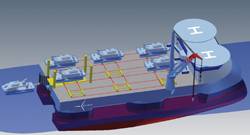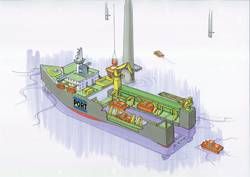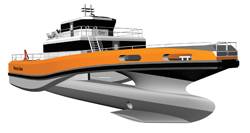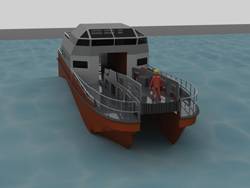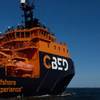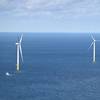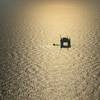Offshore Renewable Energy: Servicing North Sea Wind Turbines
A boat with suspension, a giant robotic arm and a vessel resembling a seahorse are just three of the innovative concepts shortlisted by the Carbon Trust as part of a competition to solve the problem of transferring engineers and equipment safely on to wind turbines as far as 300km offshore in wave heights up to around three meters. The project aims to improve the economics of offshore wind by keeping turbines generating electricity in the harshest sea conditions to increase revenues by as much as £3bn for the next generation of the UK’s offshore wind farms.
Through its Offshore Wind Accelerator program, the Carbon Trust is an industry collaboration of eight UK wind farm developers - E.ON, DONG Energy, Mainstream Renewable Power, RWE Innogy, ScottishPower Renewables, SSE Renewables, Statkraft and Statoil – to reduce the costs of offshore wind.
A technically rigorous process was used by the co-funded industry collaboration to select 13 designs from 450 submissions. The technical merit of these 13 concepts suggests they have the best chances of successfully driving down cost. Today’s offshore wind farms are typically less than 25km offshore in relatively benign sea conditions, and consist of up to 100 turbines. Maintenance is possible in boats about 90% of the time when wave heights are up to about 1.5m. The new ‘round three’ offshore wind projects will be as far as 300km offshore in rougher sea conditions, and may consist of as many as 2,500 turbines. At these sites, today’s access systems would only allow transfers about 210 days a year. The aim of the competition is to find concepts that can be commercialized to make transfers possible for a minimum of 300 days a year. Among the 13 designs shortlisted are a giant robotic arm for transferring engineers and equipment to the turbine base; a boat that uses suspension inspired by Paris Dakar-winning rally cars to remain stable for the transfer; a ‘seahorse’ vessel consisting of a towering keel that minimizes movements in the ocean swell; and a giant harbor mother ship that would act as a base for engineers for weeks on end, dispatching smaller daughter craft to access the turbines. Each of the successful applicants to the competition will benefit from funding of up to £100,000 to support the design and development of their concept, as well as technical support from the eight developers in the Offshore Wind Accelerator. The competition has selected the following thirteen designs, in three categories, to receive funding:
Transfer Systems
To transfer personnel and equipment from vessel to turbine, potentially with motion-compensation
• Autobrow, South Boats
• MOTS, Momac GmBH
• Wind Bridge, Knud Hansen
• TAS2, BMT Nigel Gee /
Houlder
Vessels
Vessels for transporting personnel and equipment from permanent bases or mother ships to turbines, incorporating a transfer system
• Pivoting Deck Vessel, North Sea
Logistics
• Nauti-Craft, Nauti-Craft
• Fjellstrand Vessel, Fjellstrand
• SES Vessel, Umoe Mandal
• SolidSea, University of
Strathclyde
• TranSPAR, Extreme Ocean
Innovation
Launch and Recovery Systems
Systems fitted to the permanent bases or mother ships for launching and recovering daughter craft from the sea.
• Launch & Recovery, Offshore
Kinetics
• Z Port, Z Technologies
• Launch And Recovery System, Divex
(As published in the October 2011 edition of Maritime Reporter + Engineering News - www.marinelink.com)








